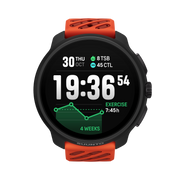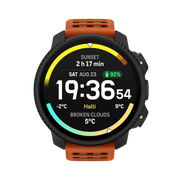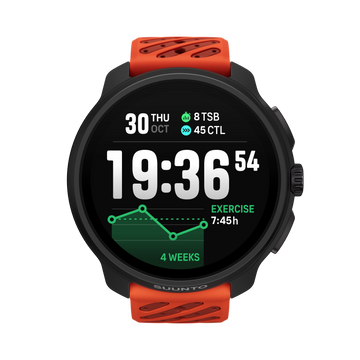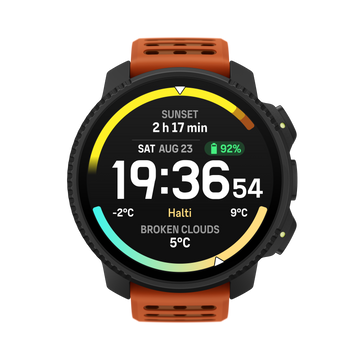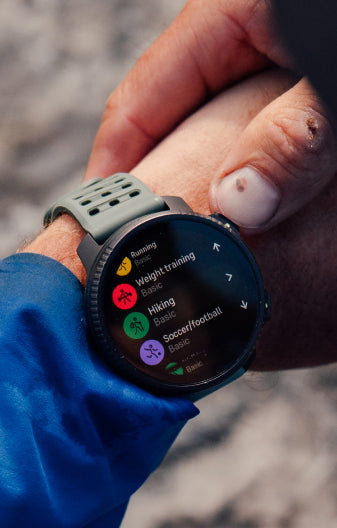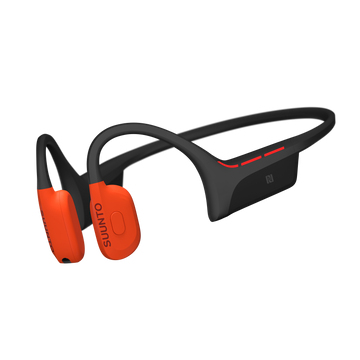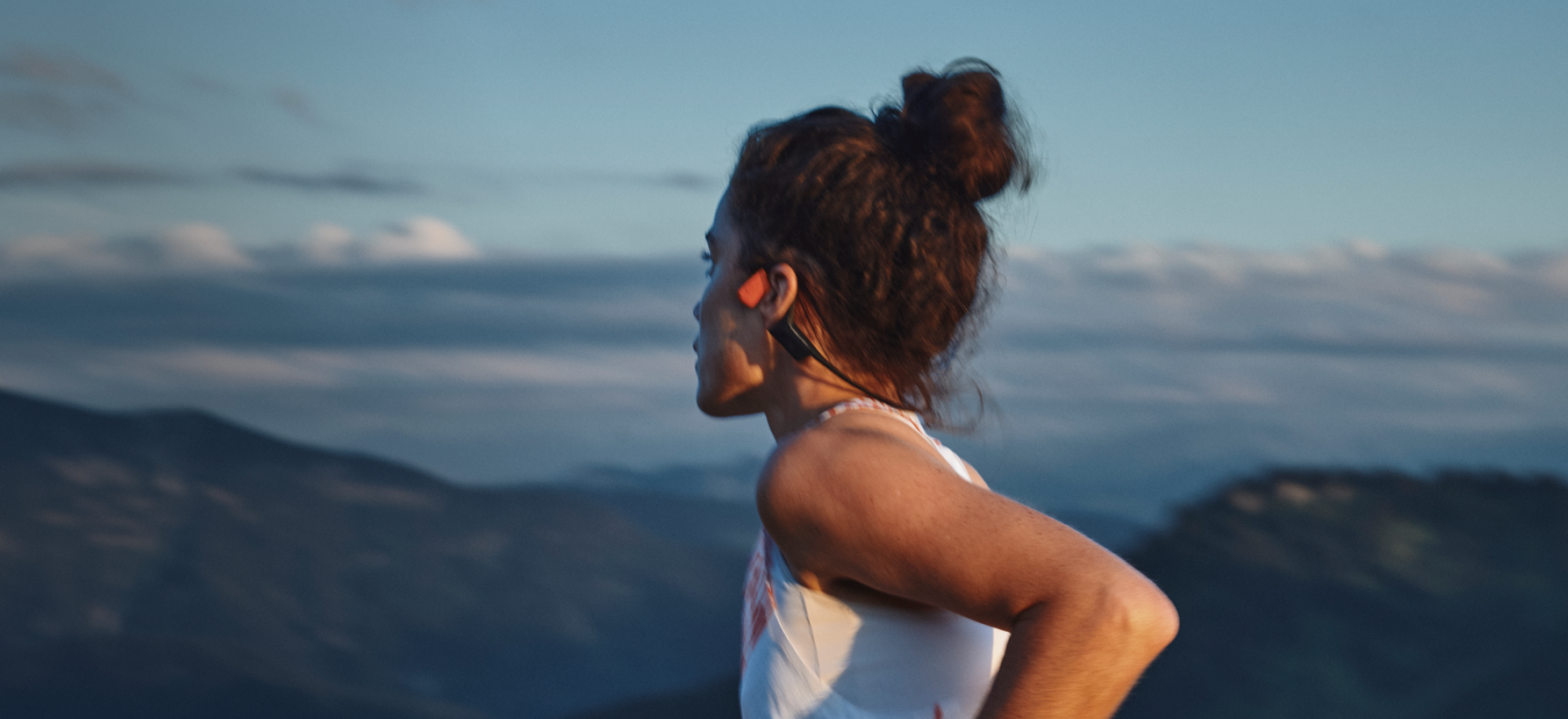

Suunto Blog

Three inspiring Vertical Week 2021 moments
Going crazy
Every year we receive feedback that vertical challenges are hard in flat countries. We can fully relate to that as here in Southern Finland the hills are also small. But every year there are also impressive and inspiring performances that show how creativity and determination can take you a long way also when you want to gain vertical meters.
One of these people was Adrien from Grenoble, France. He decided to climb up and down a staircase to reach 1000 vertical meters. After running 79 times up and down the staircase – that’s 316 floors all together – he reached his goal.
“Next time I’ll do something smarter – and outdoors that time,” Adrien commented in his post.
Keeping it consistent
Paulina from Finland proved that consistency is the key to success: she headed out every day during the Vertical Week and was very committed. The result was seven back-to-back 1000 m days, a great training block and certainly some unforgettable memories.
”A friend of mine has challenged me to join monthly “Thousand Meter Tuesdays” and Vertical Week was perfect for that!”, says Paulina who ran up and down Puijo in Kuopio, Finland, while her fiancée joined the challenge on skis.
“I knew I would be able collect the needed vertical meters even though there certainly were some challenging moments, too.”
Soaking up the views
The Vertical Week is not only about the hard, physical efforts and hill repeats. When you reach the summit, ridge or a col there’s often the reward of wide-open views. That’s what inspired us with Ben’s Vertical Week shot from the Nelson Lakes National Park in New Zealand.
“This was one of those days where all you need to do is soak up the views and appreciate what's in front of you,” Ben says. We couldn’t agree more!
Thank you to all of you for sharing your World Vertical Week experience on Instagram and inspiring us all. Congratulations Adrien, Paulina and Ben. You are the winners of the World Vertical Week contest in 2021. All three of you will receive Suunto 9 Baro watches to join you on your future adventures!
READ ALSO
More desire than ever to tally up vertical meters: World Vertical Week 2021 big data is here

A sense of community
We are talking about you, and your stories.
We feel as though we have gotten to know our community better than we ever have before. We read about how you are managing through the past year with a world turned upside down and trying to maintain your health (and sanity).
You told us about your achievements and your future dreams of adventure. We are inspired by what you have accomplished and the resolve in your path ahead whether to better health, faster races or new heights of exploration.
You took time to share with us your past experiences, and the joy found in peaceful treks through the wilderness and stressful, challenging summit pushes. Some of you shared very personal moments, experiences that have shaped your lives, both heart wrenching and hopeful.
We are honoured to have been there with you for some of those memorable moments, even at times providing critical information to get you home safely, or to help keep you motivated and pushing towards a personal goal, or a personal mission.
These stories are why we exist, and reading them reaffirms our mission and commitment to enabling them. Thank you for sharing them with us, we are grateful and inspired.
– Your fellow adventurers at Suunto
Next Steps in the application process and program:
We wanted to share that we are reading them (all) and due to the sheer amount we are going to take the following steps to ensure we a). Can kick-off the program in good time and get a first group of selected ambassadors going, b). Ensure we communicate in the most timely manner possible. So this is how we will roll from here:
We have begun to communicate to our first selected brand ambassadors and as well as those applications we’ve read through that are not a match at this time.
If you have not been communicated with, your application is still being reviewed.
We are closing the application page for now effective March 11 to ensure we can handle all the applications with care.
We will inform all applicants until this point by April of their status.
A couple of notes to help you application in the future.
Please create a ‘creator’ or ‘business’ account on Instagram (if you are on the platform), it helps us get to know you better, faster.
We will inform you about the next application round on suunto.com, our newsletters and our social channels. Stay tuned!
Tell us about you and your adventures with your Suunto! Your stories are a key reason we have made the selections we have, so keep them coming!

Get faster on those hills now
With Suunto World Vertical Week 2022 around the corner (March 14-20), we reached out to Austrian ski mountaineer, sport scientist and coach Susi Kraft and asked about what goes into getting faster vertically. Susi is one half of the Berghasen, an awesome German-language blog covering everything you need to know about ski touring: training tips, tours, gear and so on.
Like many Austrians, Susi grew up in the mountains, began skiing as a child and got into ski touring at university, and more recently trail running. Now the 29-year-old can’t stop. “With sports science I got deep insights into how training really works,” she says. “It made me rethink my own training.”
The tendency, Susi says, among endurance athletes is to slip into doing too much high intensity training, even when they know they shouldn’t. And this is further compounded by vertical speed training because climbing steep gradients radically elevates heart rate.
Why improving vertical speed is hard
“It’s hard to train your aerobic base when you go uphill,” she says. “When your body isn’t used to endurance efforts, your heart rate increases quickly, the intensity gets turned up, your lactate levels start to max, which means the pH value in the body starts to fall. If it gets too low, the muscles and respiration don’t work economically anymore.”
On top of this, while doing a lot of high intensity hill training can give short term gains, in the long term it can actually worsen your performance. So how to improve your vertical speed without blowing yourself out? Read on for Susi’s four tips and three training plans below!
Susi trains in the mountains around Salzburg. © Berghasen
Good things take time
Suunto ambassador and mountain athlete Kilian Jornet is the Rolls Royce engine of vertical speed. We’d all like to be able to power uphill like he does. But Susi points something out we easily forget; Kilian got to where he is because he spent a decade or more training his base fitness, and that is achieved through low intensity training, not going overboard on hill repeats.
“It takes patience to train your base,” Susi says. “You need a year, five years, or even longer to really accomplish that. The better your training, the better your base, the better your body will be able to handle intense exercise. So take the time to train your body to work economically. When you have a good base, you will be better able to do uphill training!”
Embrace the flat
This sounds counterintuitive, right? You might be thinking how you’ll ever get better sticking to flat terrain. Susi has a reply: “Flat training is important because it’s not that intense,” she explains. “You should combine terrain – half on flat, half in the hills. World class athletes never stop training their base, they just carefully combine it with more intense sessions.”
Build strength
If you’re really serious about wanting to improve vertical speed, then there’s no skipping legs day at the gym. Strength training for the lower and upper body are essential to getting faster.
“The stronger you are, the easier it becomes,” Susi says. “If you can keep your upper body stable, your legs and arms can work more efficiently. This is really important for pushing uphill for a long time.”
Improve your technique
“Technique is really important for any sport you’re doing uphill. “You need to find the most economic way to move your body. I suggest practicing your technique on the flat so you can really focus on it without feeling exhausted.”
Beginner, advanced and expert training plans
Susi suggests following one of these plans for two weeks, then have a rest week with one to two additional rest days. Repeat the plan for several weeks with slowly increasing the length of the sessions after week six.
Beginner
Monday: Off day
Tuesday: Core and mobility training
Wednesday: 30 min run before breakfast at low intensity (70 % of your max heart rate).
Thursday: Off day
Friday: Strength training: legs and upper body
Saturday: 30 min running or 40 min cycling at low intensity (70 % of your max heart rate).
Sunday: 1,5h biking or 2 h hiking/skimo at low intensity
Advanced
Monday: Core stability followed by general strength training (hypertrophy) for legs and upper body. Flexibility exercises for cool down.
Tuesday: Fartlek (interval) workout: 1 km at 60 % of your max heart rate then 1 km at 85 % of your max heart rate. Repeat five times. 10 min easy jog cool down.
Wednesday: 45 min run before breakfast at low intensity (70 % of you max heart rate).
Thursday: Off day
Friday: Core stability followed by general strength training (hypertrophy) for legs and upper body. Flexibility exercises for cool down.
Saturday: 60 min running or 2 h cycling at low intensity (70 % of you max heart rate).
Sunday: 2,5h biking or 3 h hiking/skimo at low intensity
Expert
Monday: Core stability followed by general strength training (hypertrophy) for legs and upper body. Flexibility exercises for cool down.
Tuesday: Fartlek (interval) workout: 1 km at 70 % of your max heart rate then 1 km at 85 % of your max heart rate. Repeat five times. 10 min easy jog cool down.
Wednesday: 50 min run before breakfast at low intensity (70 % of you max heart rate).
Thursday: Off day
Friday: Core stability followed by general strength training (hypertrophy) for legs and upper body. Flexibility exercises for cool down.
Saturday: 80 min running or 2 h cycling at low intensity (70 % of you max heart rate).
Sunday: 2,5h biking or 3 h hiking/skimo at low intensity. During the workout: 5x3 min. at 90 % of your maximum heart rate with at least 3 min. of easy jog between the 3 min. intervals
Lead images: © Berghasen
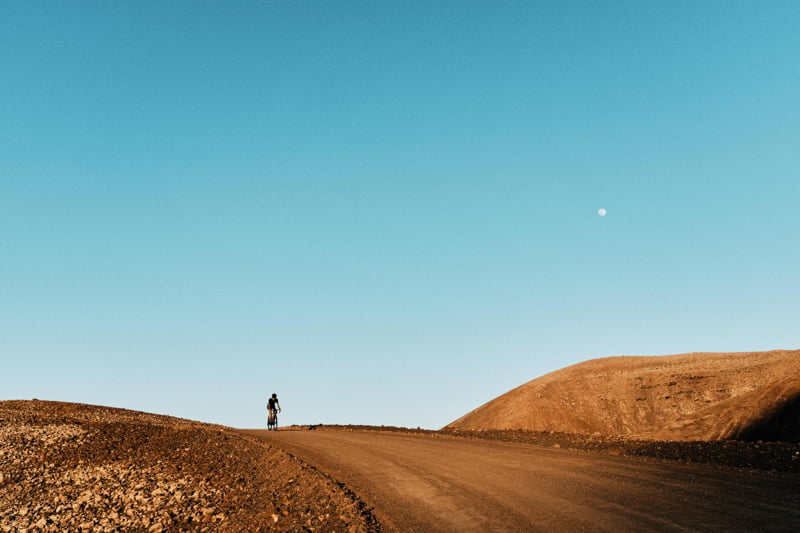
Meet the wild child who found her best self adventure cycling
Spending time on Fuerteventura in the Canary Islands for the last few months has given Sami Sauri the outlet she needs. Staying at a friend’s retreat centre, she’s been out surfing and cycling whenever she can. Life indoors doesn’t come easily to her.
“Normally I escape from thinking and being alone with myself and that’s why I do big trips because at least you’re sitting on a bike and not sitting in your apartment looking at the ceiling,” Sami says. “Stuck at home in Girona during the lockdown my head just exploded. So I took leave from work and escaped to the mountains in summer 2020. That didn’t make much difference so I went back to what I love most, the sea. So I’m travelling back and forward between Girona and Fuerteventura.”
The new Suunto ambassador is at her best on epic adventure rides, like the one she did with a crew of friends in 2018 across the US via Route 66, or, that same year, the 1500 km ride of the Trans Labrador Highway in Canada. The 29-year-old Spainard has adventure cycled all over the place, and has her sights set on riding in Kenya and France next – when life returns to normal.
“The trips I’ve been on have helped me a lot,” Sami says. “You’re sitting on a bike and seeing life go by and you have a lot of time to think about things. Sometimes it’s so monotonous that it’s harder mentally than physically. It taught me a lot about how to be and move forward in life.”
Sami is a self admitted “wild child” who skipped school whenever she could, and left home when she was 17 to lead her own life. She changed styles with the seasons, and landed her first job at a skate and surf shop. Things really changed for the better in 2010 when Sami laid her eyes upon a friend’s fixed gear bike. They were out in Barcelona, her hometown, meeting for a drink and her friend rolled up on the bike. Impressed that it didn’t have brakes, Sami had a try and instantly fell in love. She saved up and bought her own.
“It was the shittest bike ever, but I loved it,” she says. “Every single night after school I’d go out riding to learn how to skid, which is how to brake without brakes. I’d ride through the traffic like crazy. Thanks to that bike I discovered so many places in my city. I would have never seen them without a bike. It really opened my eyes.”
Now on Fuerteventura, waiting for the pandemic to pass, heading out surfing, trail running or cycling whenever she can, Sami tracks all her activities with her Suunto 9. “Suunto has every single sport mode you can imagine,” she says. “Now I take my bike and go to the beach, track my cycling, jump in the water, track my surfing, it’s perfect. For someone like me who combines sports, Suunto is the way to go. I have it with me all the time.”
All images: © Sergio Villalba

6 keys to planning your training year
The Austrian management guru Peter F. Drucker said it well: “Unless commitment is made, there are only promises and hopes; but no plans.”
Put another way, without a clear plan, there’s no real commitment. It’s the same with training. We need a goal and a plan to reach it. Otherwise, the risk is we keep on doing the same old thing. If we do aim to improve our performance, we must know where we’re going and how to get there.
“A training plan doesn’t have to start directly at the beginning of a year, but it’s a good time for making plans and setting new goals,” says Austrian sport scientist, coach and athlete Susi Kraft.
Susi is one half of the Berghasen, an awesome German-language blog covering everything you need to know about ski touring: training tips, tours, gear and so on. We caught up with the passionate mountain lover and asked what goes into a good training plan. Read on for Susi’s six tips.
Susi works and plays in the stunning mountains around Salzburg. © Berghasen
Take the long view
You might be wondering whether you really need to have a plan for the whole year. The answer is yes if you want to have an optimal training year and achieve your goals. Susi explains why:
“When designing a training plan you normally define one or two personal highlights in the training year,” she says. “At those events your physical performance should be at the highest level.”
Once the highlights are decided you then distribute every single workout/training session across your calendar. Sport scientists like Susi call this process training periodization, which has three phases:
1. Base period2. Pre-competition period3. Competition period
“A smart training periodization is only possible if you have an overview of the whole year and the athlete highlights factored in,” Susi says. “Besides that you also have to factor in your personal life, like family, holidays, work, weddings, kids and so on.”
Select your highlights
Without a goal, it’s easy to lose direction. When thinking about your next goal, use the acronym as a guide, SMART: specific, measurable, achievable, realistic and timely.
Specific: Well defined, clear, and unambiguousMeasurable: With specific criteria that measure your progress toward the accomplishment of the goalAchievable: Attainable and not impossible to achieveRealistic: Within reach, realistic, and relevant to your life purposeTimely: With a clearly defined timeline, including a starting date and a target date. The purpose is to create urgency.
“The training plan itself should always be orientated around a goal you want to achieve,” Susi says. “That goal could be a trail running competition, finishing your first triathlon, climbing Mont Blanc or losing weight. Setting new goals and working with a specific training plan keeps motivation high. That’s what I see when working with my athletes.”
Consider this
“The no pain, no gain approach to training is really outdated, “ Susi says. “30 years ago experts in sports science didn’t always know how to train right. What we know now is that the best endurance athletes don’t train so hard – most of their training is at low intensity.”
Take a moment to think about that before creating a plan to achieve your goal. This is especially important if you have a tendency to push yourself hard. A gentler approach may serve you better.
“A lot of people I see try to get better really fast,” Susi says. “They train really hard, really long distances. You may get better quickly, but in the long term that’s really bad for the body and for the training programme. Some people actually get worse, become overtrained or are prone to injuries.”
Don’t copy and paste
Oh, the internet. We can find countless training plans and make them our own. Thing is, cutting corners like that might not give you the results you wish for.
“If you just copy last year’s or someone else’s training plan it won’t account for possible improvements in your training status,” Susi says. “Your plan should always be built on your current endurance, strength and other skills. That’s why it is so important to do performance diagnostics regularly and before you start working with a new training plan or coach.”
Avoid these classic mistakes
Susi says people tend to fall into two camps. Those that go overboard and do too much high intensity training too soon, and those that like routine and do the same workouts every week.
“Really think about intensity distribution in your plan,” Susi says. “The risk is, that you do the same stuff every week. That mistake may lead to slower progress, monotony or even overtraining because you didn’t consider rest day and rest weeks. Most people tend to train too hard over several weeks or months. Over a whole year this may lead to chronic exhaustion.”
Don’t be that guy.
Follow this planning flow
Set goals / highlights
Analyze your current physical status – endurance, strength, stability, speed, balance – by doing physical performance tests. The outcome is influenced by your training history. Also consider how much experience a person has and determine your training age, meaning how many years of endurance training, strength training you’ve done and how many years of specific training in the sport you want to compete in.
How often and what exactly is your training programme (hours, km, what kind of sports etc.)
Which weaknesses do you have? What are the main factors we need to approve?
How much time do you have to achieve your goal?
Determine the training periodization over the time window you have available.
Carefully and realistically distribute the training intensity across the calendar
Plan single blocks or training sessions
Lead images: © Berghasen

Share your passion with Suunto app
KEEP UP WITH THE SUUNTO COMMUNITY
The app has many ways in which it keeps you and our community engaged, helps you connect with people with similar interests and allows you to create everlasting training memories and to share relevant content with your friends or on social media.
But, first things first:
We value your privacy
It's always up to you to decide how much you want to share. By default, after you have created your account in the app, your activities are private. Nevertheless, you can change that to any of the other two privacy options: show your activities to your followers or make them public for all the Suunto app users. Additionally, you can change that setting for every exercise individually.
In the app's privacy settings, you can also define if you want to approve people before they can start following you. Read more about adjusting privacy settings with iOS and Android.
Then:
Create long-lasting training memories
Edit your activities to make them memorable: write stories, add comments and comment on your friends' training, add photos and even videos taken during your activity. It matters even if you have a private account. This way, you create a visual diary for your activities and experiences.
Share a data overlay image of your training
After adding photos to your activities, you can share (or save) them with data overlays. You can add elements like altitude graph, total distance, the highest point and many more. You can also add a custom title text on top of the image. Share them with your friends, your social media, or save them for later in your files. Tap the "Share" button on your activity. Tap the information you have displayed to change it. Change the photo by choosing another one from your gallery.
You can even share your training week, month, or year
Want to show your friends your training days, duration per sports, distance, ascent and the active kcal? We have the best way for you to do that. On the app's main screen, tap the calendar or sports/h square and then choose what you want to share. You can send it directly to your friends, post it on your social media channels or save the image for later.
Connect with your friends even if they aren't using our app (yet)
You can sync your Suunto app account with our partner services, like Strava, Training Peaks, Relive and Fatmap, and reach your friends there, too. To connect your Suunto app with other services. Enable the automatic sync from under your Profile. Select the Partner services option and find the apps you want to connect your Suunto app to.
Happy training!
